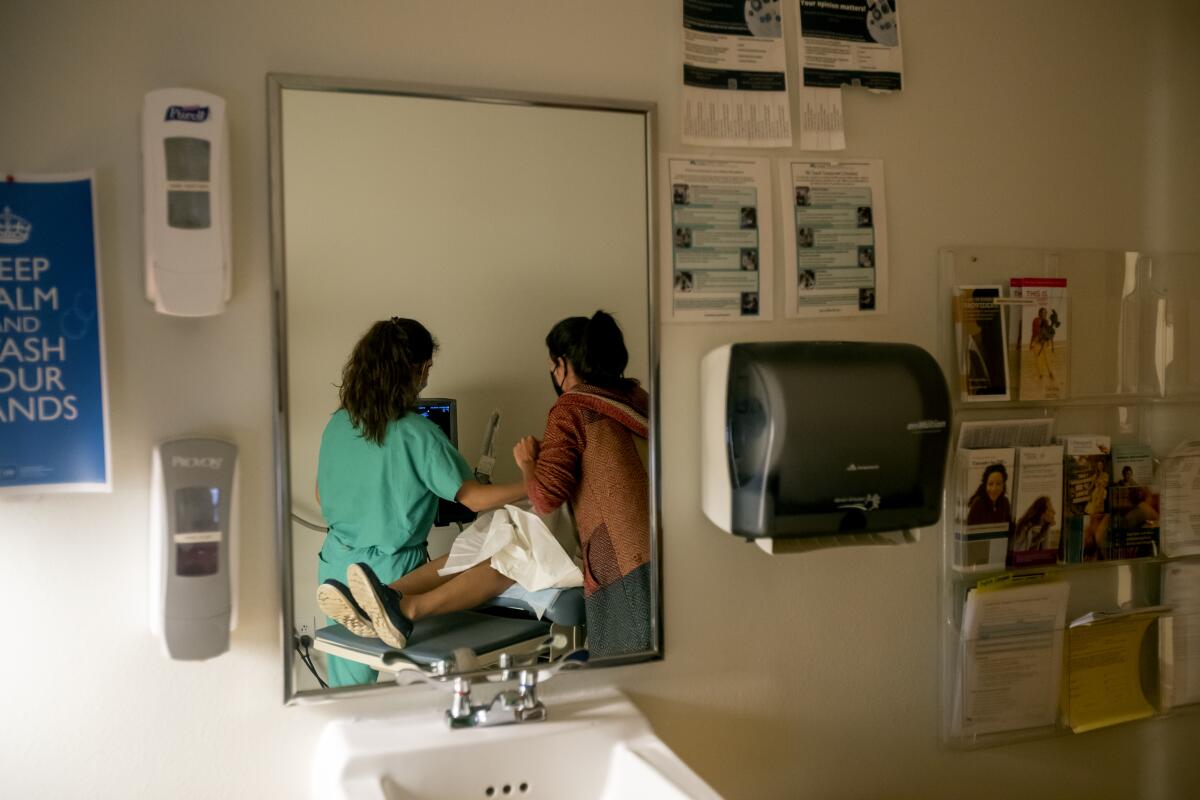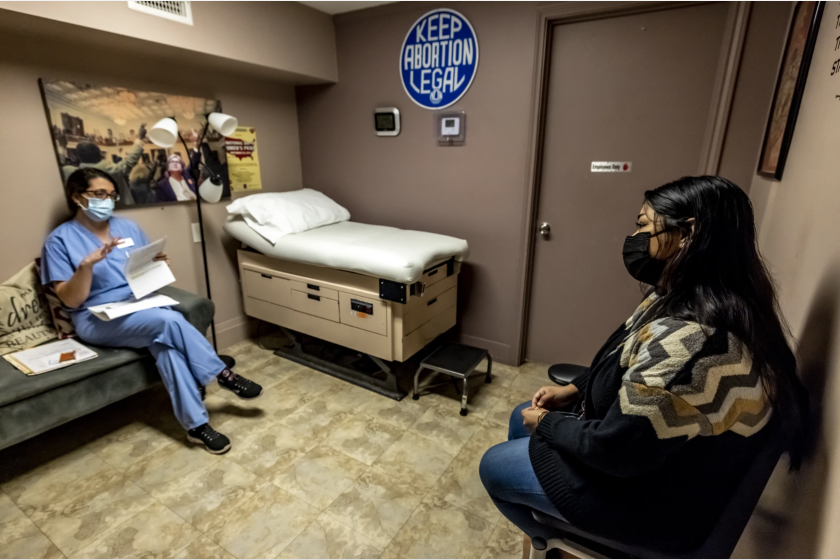Opinion: Tennessee abortion law is stopping me from having more children

- Share via
Over the New Year’s holiday, my husband and I received the surprise of our lives: a positive pregnancy test. The pregnancy was unplanned, but very welcome. Getting pregnant with our first two children had been somewhat of a grand undertaking, so the idea that I could just get pregnant was novel to us. Two positive blood tests at my OB-GYN’s office confirmed the pregnancy was progressing as expected. For the entire month of January, my husband and I smiled more than ever before as we marveled at our surprise, miracle baby.
But a few weeks later, the first ultrasound erased those smiles. The baby was measuring behind and had no heartbeat. Our miracle baby had died.
Along with the diagnosis of miscarriage came a new health condition for me: recurrent pregnancy loss. This baby marked my third miscarriage, and my doctor in Tennessee was concerned I would never again be able to carry a successful pregnancy without further investigation into what was going wrong in utero. As such, my doctor recommended I have a procedure called dilation and curettage (D&C) to remove the pregnancy tissue. She would send it to pathology for further testing so she could better understand how I could get pregnant — and stay pregnant — in the future.
States may try to write laws that selectively support pregnant people’s health, but they will fail.
But performing a D&C was easier said than done. My doctor had thousands of hours of training in the procedure, and she could have done it in the office the same day. But the healthcare system for which she worked now prohibited it without excessive documentation. Before she could even schedule the D&C, I would need three ultrasounds over the next two weeks to prove that my baby was still dead.
Eight months prior, the U.S. Supreme Court had famously overruled Roe vs. Wade in the Dobbs vs. Jackson Women’s Health Organization decision. Despite the fact that both Roe and Dobbs concerned early termination of viable pregnancies, the decision quickly had ramifications for nonviable pregnancies such as mine. Thirteen states, including mine, had trigger laws that went into effect the moment the court overruled Roe. Because a D&C could be used to terminate a viable pregnancy, the procedure was in effect verboten. In some states, doctors who violated the new laws could be convicted of a felony.
The post-Dobbs antiabortion laws have reached far beyond mothers trying to end their pregnancies voluntarily. They are also inhibiting access to healthcare for women like me who want to have a viable pregnancy. The political advocates responsible for the new laws proclaim themselves to be protecting human life, yet their laws can have the opposite effect.
These bans were passed in a hurry, and the end result is poorly drafted laws that are difficult for lawyers and courts to interpret. Because the consequences of violating them are so draconian, many healthcare systems and physicians are understandably avoiding all procedures and medicines associated with voluntary termination of pregnancy, even if they are being used for another purpose.
Thus the new laws, which effectively ban certain medicines and procedures, have already led to imprecision and uncertainty. Bans of this kind are never the right approach in regulating healthcare. Procedures and medicines can serve widely varied — and even opposite — purposes. Ozempic was developed as a Type 2 diabetes medication, but it has gained popularity as a treatment for weight loss. Misoprostol, one of the medicines commonly used in voluntary termination of pregnancy, also treats ulcers.
Since the Supreme Court struck down the right to choose, there’s been tremendous uncertainty and confusion. But efforts are already underway to find new ways to protect that right.
The D&C procedure, which can be used to terminate a pregnancy voluntarily, can also be used to help women like me — women who want to have a viable pregnancy but cannot carry to term. D&Cs can help women who have an incomplete miscarriage or unexplained pregnancy loss. A delay in expelling pregnancy tissue can cause health complications such as infections, and some women cannot have a successful future pregnancy without first having a D&C.
I was never able to get a D&C. On the morning of my final ultrasound — following nearly two weeks of waiting — I started to miscarry on my own. My doctor immediately prescribed hormones in an attempt to slow the progression of the miscarriage, but it was not enough. When I went for the procedure the following day, I had insufficient pregnancy tissue remaining to collect. After a painful waiting period, my husband and I were left without answers regarding what went wrong in this pregnancy.
As my story illustrates, the consequences of these new laws go beyond outlawing abortion. The restrictions occupied precious time on my doctor’s schedule when she could have been caring for other patients. They forced me to undergo unnecessary, expensive ultrasounds that took a severe emotional toll. Now I am hesitant to get pregnant again since, under the current legal regime, history is likely to repeat itself and put me through the same traumatic experience.
In healthcare, medicines and procedures are almost never uniformly good or bad, and every patient’s situation is unique. Until state legislatures take these basic facts into account, the new antiabortion laws will continue to promote human suffering.
Jennifer Shinall is a professor of law at Vanderbilt University Law School and a faculty member in the Vanderbilt University Law and Economics Program.
More to Read
A cure for the common opinion
Get thought-provoking perspectives with our weekly newsletter.
You may occasionally receive promotional content from the Los Angeles Times.












